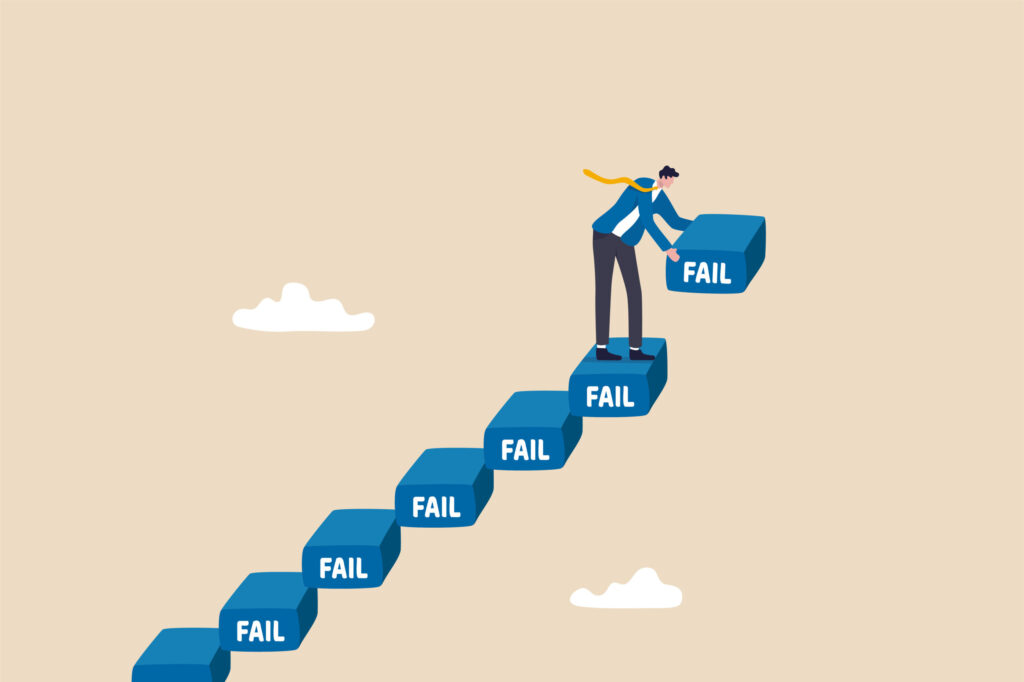Embracing Failure: How to Turn Setbacks into Stepping Stones

In the ever-evolving landscape of careers and personal growth, failure is often perceived as the ultimate setback. However, what if we could shift our perspective and view failure not as an endpoint, but as a crucial stepping stone towards success? Embracing failure can be transformative, turning what seems like a defeat into an opportunity for growth and development.
The Power of Perspective
Failure is an inevitable part of life. Everyone, from successful entrepreneurs to renowned artists, has faced failure at some point. The key difference lies in how we perceive and respond to these setbacks. By adopting a growth mindset, we can view failure as a valuable learning experience rather than a personal flaw.
Learning from Mistakes
Every failure carries with it lessons that can propel us forward. Here’s how to extract valuable insights from your setbacks:
-
- Analyse What Went Wrong: Take a step back and objectively assess the situation. What factors contributed to the failure? Was it a lack of preparation, external circumstances, or a gap in skills? Identifying the root cause can prevent similar mistakes in the future.
-
- Gather Feedback: Seek constructive feedback from mentors, colleagues, or peers. Often, an external perspective can shed light on areas for improvement that we might overlook.
-
- Reflect and Adjust: Reflect on the feedback and insights gained. What changes can you implement to improve? This could mean acquiring new skills, altering strategies, or approaching problems differently.
Building Resilience
Resilience is the ability to bounce back from setbacks. Cultivating resilience helps us to not only recover from failure but to thrive in the face of adversity. Here are some ways to build resilience:
-
- Maintain a Positive Outlook: Focus on the positive aspects and potential opportunities that arise from failure. Optimism can fuel perseverance and creativity.
-
- Develop a Support System: Surround yourself with supportive individuals who can offer encouragement, advice, and a listening ear during tough times.
-
- Set Realistic Goals: Break down larger goals into smaller, manageable steps. Achieving these incremental milestones can build confidence and momentum.
Embracing Failure in the Workplace
In a professional setting, embracing failure can lead to innovation and continuous improvement. Here’s how organizations can foster a culture that views failure as a stepping stone:
-
- Encourage Experimentation: Create an environment where employees feel safe to take risks and experiment without the fear of punitive consequences. This can drive innovation and creative problem-solving.
-
- Celebrate Effort and Learning: Recognize and celebrate the effort and learning that comes from failed attempts. This reinforces the idea that failure is a natural part of the learning process.
-
- Provide Support and Resources: Offer resources such as training, mentorship programs, and workshops to help employees develop resilience and learn from their mistakes.
Success Stories: Turning Failure into Triumph
Many successful individuals have turned their failures into stepping stones. Consider these examples:
-
- Thomas Edison: He famously failed thousands of times before successfully inventing the light bulb. Edison viewed each failure as a step closer to success, saying, “I have not failed. I’ve just found 10,000 ways that won’t work.”
-
- J.K. Rowling: Before the success of the Harry Potter series, Rowling faced numerous rejections from publishers. Her persistence and belief in her work eventually led to her becoming one of the best-selling authors in history.
Conclusion
Embracing failure is about transforming our mindset and seeing setbacks as opportunities for growth. By learning from our mistakes, building resilience, and fostering a supportive environment, we can turn failures into stepping stones towards greater achievements. Remember, every failure carries the seed of success—it’s up to us to nurture it and let it grow.
In a world where the fear of failure can often hold us back, let’s embrace our setbacks and turn them into powerful catalysts for growth and success.






Responses